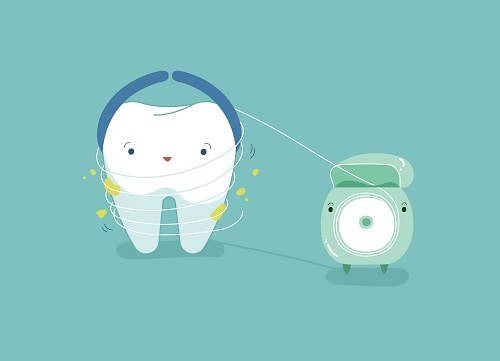Flossing is an essential part of maintaining good oral hygiene. It is often overlooked, but it is just as important as brushing your teeth. In this article, we will discuss why flossing is important and how it can benefit your overall oral health.
What is flossing?
Flossing is a process of cleaning between your teeth and along the gum line using a thin thread or floss. The purpose of flossing is to remove food particles, plaque, and bacteria from areas of your mouth that your toothbrush cannot reach. The American Dental Association recommends flossing at least once a day to help prevent tooth decay, gum disease, and other dental problems.
Why is flossing important?
Flossing is important for several reasons. Here are some of the key benefits of flossing:
- Removes plaque and bacteria: Plaque is a sticky film of bacteria that forms on your teeth and can lead to tooth decay and gum disease. Flossing helps to remove plaque from between your teeth and along the gum line, where your toothbrush cannot reach.
- Prevents gum disease: Gum disease is a common dental problem that can lead to tooth loss if left untreated. Flossing helps to remove plaque and bacteria from the gum line, which can help prevent gum disease.
- Reduces the risk of cavities: Cavities are caused by the acid produced by bacteria in plaque. Flossing helps to remove food particles and plaque from between your teeth, which reduces the risk of cavities.
- Improves overall oral health: Flossing, in addition to brushing and using mouthwash, is an important part of a good oral hygiene routine. By removing plaque and bacteria, flossing helps to maintain healthy teeth and gums.
How to floss properly
To get the most benefit from flossing, it is important to floss properly. Here are some steps to follow when flossing:
- Start with a piece of floss that is about 18 inches long. Wind the floss around your index fingers, leaving about 2 inches of floss between your fingers.
- Hold the floss tightly between your thumbs and index fingers and slide it gently between your teeth.
- Curve the floss around the base of each tooth, making sure to go beneath the gum line.
- Use a clean section of floss for each tooth to avoid spreading bacteria.
- When you are done flossing, rinse your mouth with water to remove any remaining debris.
How many times to floss a day
It is recommended to floss at least once a day to maintain good oral hygiene. However, if you have braces or certain dental conditions, your dentist may recommend flossing more often. It’s best to consult with your dentist or dental hygienist to determine how often you should floss based on your specific dental needs.
Types of floss
There are many different types of floss available, including waxed, unwaxed, flavored, and unflavored. Some people prefer waxed floss because it slides more easily between teeth, while others prefer unwaxed floss because it is thinner and can be easier to use. Flavored floss can make flossing more pleasant, but it is important to choose a flavor that does not contain sugar, as sugar can contribute to tooth decay.
Flossing tools
Here are five effective flossing techniques that you can try:
- The finger-wrap: Cut off around 18 inches of floss and wind it around your index or middle fingers on both hands. Use your thumbs to guide the floss between your teeth and gently curve it around the base of each tooth, making sure to go beneath the gum line.
- The loop or circle: Cut a piece of floss around 18 inches long and tie it into a loop or circle. Hold the looped floss between your thumbs and index fingers and guide it between your teeth. Use a gentle sawing motion to remove plaque and debris.
- The spool or reel: Cut a piece of floss around 18 inches long and wrap the ends around your index fingers, leaving a small space between your fingers to use as a spool. Use your thumbs and forefingers to guide the floss between your teeth and under the gum line.
- The water flosser: A water flosser is a device that uses a stream of water to clean between teeth and below the gum line. Simply aim the stream of water between your teeth and move along the gum line to remove debris and bacteria.
- The wooden plaque remover: A wooden plaque remover is a small, pointed stick made of birch wood that is used to remove plaque and debris from between teeth. Insert the pointed end of the stick between your teeth and gently move it back and forth to remove any buildup.

